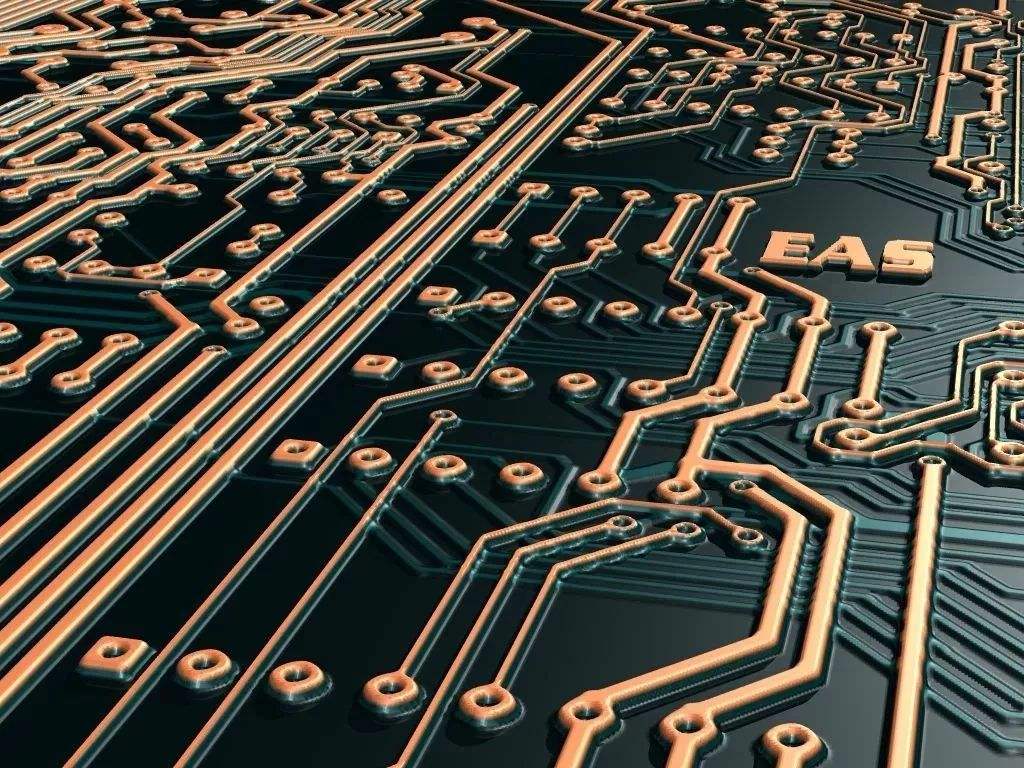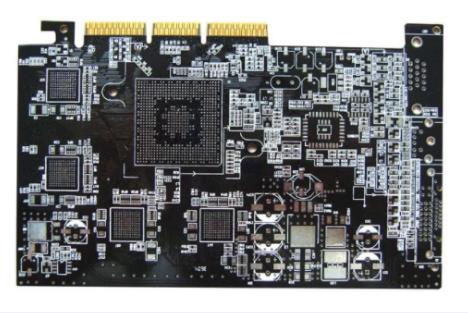
design for manufacturability of through hole PCB
This paper will elaborate on some manufacturing process problems that need to be considered when designing through holes and provide reference for designers Design for manufacturability is a novel design method It ensures the quality of the production process and helps to improve production effICiency
1 Introduction
For electronic product designers, especially circuit board designers, product manufacturability design is a factor that must be considered. If the PCB design does not meet the requirements of manufacturability design, the production efficiency of products will be greatly reduced. In serious cases, the designed products may not be manufactured at all. Through hole technology is still in use today. DFM can play an important role in improving the efficiency and reliability of through hole manufacturing. DFM method can help through-hole manufacturers reduce defects and maintain competitiveness. This paper introduces some DFM methods related to through-hole insertion. These principles are general in nature, but may not be applicable to all situations. However, PCB designers and engineers who use through-hole technology say it still helps.
2. Typography and layout
Proper layout in the design phase can save many troubles in the manufacturing process.
1) The use of large plates can save data, but due to warpage and weight, it is difficult to transport in the production process. It needs to be fixed with a special fixture, and it should be avoided to use more than 23 30 cm of board surface. It controls the size of all circuit boards within two to three ranges, which helps reduce the downtime caused by adjusting the guide rail, rearranging the position of the barcode reader, etc. When the product is replaced, SMAll changes in the size of the circuit board can also reduce the number of wave peaks and welding temperature curves.
2) It is a good design method to include different kinds of puzzles in a circuit board, but only the circuit boards with the same Production requirements in a product can be designed in this way.
3) Some borders shall be provided around the circuit board, especially when there are components on the edge of the circuit board. Most automatic assembly equipment requires at least a 5mm area on the edge of the circuit board.

4) Try to wire on the upper surface (component surface) of the circuit board, and the lower surface (welding surface) of the circuit board is easy to be damaged. Do not wire near the edge of the circuit board, because the production process is clamped by the edge of the circuit board, and the wiring on the edge may be damaged by the jaws of the wave soldering equipment or the rack conveyor.
5) For devices with higher pin numbers, such as heads or flat cables, oval pads should be used instead of round pads to prevent solder bridging during wave soldering (Figure 1).
6) Make the distance between the positioning holes and the components as large as possible, and standardize and optimize the size according to the insertion equipment; Do not plate the positioning hole, because the diameter of the plated hole is difficult to control.
7) Try to use the positioning hole as the installation hole of PCB in the final product, so as to reduce the drilling in the production process.
8) The test circuit pattern can be arranged on the scrap side of the circuit board for process control, and can be used to monitor the surface insulation resistance, cleanliness, solderability, etc. during the manufacturing process.
9) For larger circuit boards, a channel should be left in the center to support the circuit board in the center during wave soldering, prevent the circuit board from sagging and solder sputtering, and help the circuit board surface to weld uniformly.
10) The testability of the needle bed shall be considered in the layout design. During online testing, flat pads (without leads) can be used to better connect pins so that all circuit nodes can be tested.
3. Positioning and placement of components
1) Arrange the components in rows and columns according to the grid pattern position, and all axial components should be parallel to each other, so that the axial insertion machine does not need to rotate the PCB when inserting, because unnecessary rotation and movement will greatly reduce the speed of the inserter.
2) SIMilar elements shall be arranged in the same conduit on the circuit board. For example, make the negative pole of all radial capacitors face the right side of the circuit board, and make all the notch MARKs of the dual in-line package face the same direction, which can speed up the insertion and make it easier to find errors. As shown in Figure 3, since board A uses this method, it is easy to find the reverse capacitor, while board B requires more time to search. In fact, a company can standardize the direction of all circuit board components it manufactures. Some circuit board layouts may not allow this, but this should be an effort.
3) Align the direction of DIP package components, connectors and other high pin count components with the direction of wave soldering, which can reduce the soldering bridge between component pins.
4) Make full use of screen printing to mark the circuit board, such as drawing the frame for pasting bar codes, printing arrows to instruct the direction of wave soldering on the circuit board, and using dotted lines to trace the contour of components on the bottom surface (so that the circuit board only needs screen printing).
5) Drawing component references and polarity instructions, which are still visible after component insertion, is helpful for inspection and troubleshooting, and is also a good maintenance work.
6) The distance between the components and the edge of the circuit board shall be at least 1.5mm (3mm), which will make the circuit board easier to transmit and wave solder, and will cause less damage to the surrounding components.
7) When the distance between elements above the plate surface needs to exceed 2mm (such as light-EMItting diodes, high-power resistors, etc.), add shims below them. If there is no gasket, these elements will be "squeezed" during transportation, and are vulnerable to impact and impact during use.
8) Avoid placing components on both sides of the PCB, as this will greatly increase assembly labor and time. If parts must be placed on the underside, they shall be physically bonded together to mask and peel off the solder mask tape.
9) Try to evenly distribute the components on the PCB to reduce warpage and help evenly distribute the heat during wave soldering.
4. Machine insertion
1) Gaskets for all components on the circuit board shall be standard and industry standard spacing shall be used.
2) The selected components shall be suitable for machine insertion. Please remember the conditions and specifications of the plant equipment, and consider the packaging form of the components in advance to better match the machine. Packaging may be a bigger problem for components with strange shapes.
3) If possible, use the axial type of the radial element as much as possible, because the insertion cost of the axial element is relatively low, and if space is very valuable, the radial element can also be preferred.
4) If there are only a few axial elements on the circuit board, they should be completely converted to radial type, and vice versa, so as to completely eliminate the insertion process.
5) When arranging the board surface, the bending direction of the contact pin and the range reached by the automatic insertion machine components should be considered from the perspective of power spacing, and at the same time, it should be ensured that the bending direction of the contact pin will not lead to a tin bridge.
5. Wires and connectors
1) Do not connect wires or cables directly to the PCB, but use connectors. If it is necessary to weld the wire directly to the circuit board, the wire shall be used to terminate the wire to the terminal of the circuit board. Wires from the circuit board shall be concentrated in specific areas of the circuit board so that they can be nested together to avoid affecting other components.
2) Use wires of different colors to prevent errors during assembly. Each company can adopt its own color scheme, for example, the high position of all product data lines is represented by blue, and the low position is represented by yellow.
3) Connectors shall have larger pads to provide better mechanical connection, and leads of connectors with high pin numbers shall be chamfered to facilitate insertion.
4) Avoid the use of dual in-line package sockets. In addition to extending the assembly time, this additional mechanical connection will reduce the long-term reliability. The sockets are only used when the DIP site needs to be replaced for maintenance reasons. The quality of DIP has made great progress today, and it does not need to be replaced frequently.
5) Marks used to identify directions shall be engraved on the circuit board to prevent errors when installing connectors. The solder joint of the connector is the place where the mechanical stress is concentrated. It is recommended to use some clamping tools, such as keys and clips.
6. The whole system
1) Before designing a printed circuit board, components should be selected so that they can be laid out and help to implement the DFM principles described herein.
2) Avoid using parts that require machine pressure, such as wire pins, rivets, etc. In addition to slow installation, these parts may damage the circuit board and have low maintenance costs.
3) Use the following methods to minimize the type of components used on the circuit board: replace a single resistor with a row resistor; Replace two 3-pin connectors with six pin connectors; If the values of two components are similar, but the tolerances are different, the component with the lower tolerance in the two positions shall be used; Use the same screws to secure the various heat sinks to the circuit board.
4) It is designed as a general board that can be assembLED on site. For example, install a switch, replace the circuit board used in China with an export model, or use jumpers to replace one model with another.
7. General requirements
1) When conformal coating is applied on the circuit board, the parts that do not need coating shall be marked on the drawing during engineering design, and the influence of coating on line to line capacitance shall be considered during design.
2) For through-hole, in order to ensure welding effect, the clearance between pin and hole diameter should be between 0.25mm and 0.70mm. The larger aperture is favorable for machine insertion, while the smaller aperture requires good capillary effect, which requires a balance between the two.
3) Parts that are pretreated according to industry standards shall be selected. Part preparation is one of the effective parts in the production process. In addition to adding additional steps (corresponding electrostatic damage risk and longer delivery cycle), it also adds new opportunities for errors.
4) The specifications of most purchased hand plug-in components should be set so that the lead length on the welding surface of the circuit board does not exceed 1.5mm, which can reduce the workload of component preparation and pin trimming, and the circuit board can be better grounded through wave soldering equipment.
5) Avoid using snaps to install smaller mounts and radiators, because it is slow and requires tools, sleeves, plastic quick connect rivets, double-sided tape, or solder joints should be used to mechanically connect PCB boards








